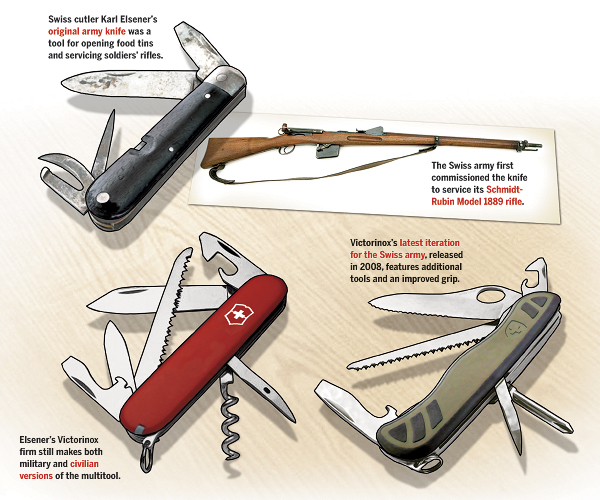
Switzerland’s army has remained neutral for centuries but nevertheless has made a profound contribution to the military world: the couteau suisse, Schweizer Messer or coltellino swizzero, better known among English speakers as the Swiss army knife. In the late 1880s the Swiss army sought a special folding knife to help its citizen-soldiers open tinned food and service their Schmidt-Rubin Model 1889 rifles. Lacking sufficient production capacity, the Swiss placed an order with German firm Wester & Co. This irked Karl Elsener, a Swiss manufacturer from Ibach, who soon developed his own homegrown design. Elsener’s knife, issued in 1891, incorporated dark wood grips, a blade, a reamer, a can opener and a screwdriver. Within five years he had devised a revolutionary knife with tools on both sides held by the same spring. In 1893 the competing Swiss cutler Wenger, based in Delémont, started producing similar knives, and in 1908 the Swiss government granted it and Elsener contracts to supply the army. After the death of his mother, Victoria, in 1909, Elsener named his company after her, later renaming it Victorinox after introducing stainless steel blades (acier inoxydable in French). Victorinox acquired Wenger in 2005, though the latter still produces knives under its own brand.
In addition to Victorinox’s latest Soldatenmesser 08, updated for the Swiss army, variations on the Swiss army knife are sold and used around the world, by soldiers and civilians alike.




